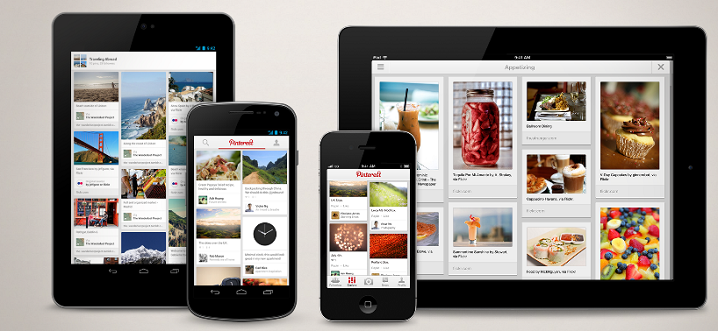Pinterest was perhaps the most popular social sharing service in 2012. Pinterest is a pinboard-style photo sharing website that allows users to create and manage theme-based image collections such as events, interests, hobbies, and more. Pinterest launched as a closed beta in March 2010. Nine months after launch the website had 10,000 users. In December 2011, the site became one of the top 10 largest social network services, according to Hitwise data, with 11 million total visits per week. According to Experian Hitwise, Pinterest became the third largest social network in the United States in March 2012, surpassing LinkedIn and Tagged. On 10 August 2012, Pinterest was opened to everyone without request or require an invitation. Globally, the site is most popular with women. In 2012, it was reported that 83% of the global users were women. In August 2012, Pinterest overtook competing micro-blogging site Tumblr for the first time in terms of unique monthly visitors, clocking in at just under 25 million.
As of March 2012, Pinterest was valued at $1.5 billion.
Pinterest co-founder and CEO Ben Silbermann shared these startup lessons on how Pinterest became the most talked about social sharing app in 2012 in various interviews. You could apply some of these tips to your own startup.
1. Vision: When you open up Pinterest, Silbermann says “you should feel like you’ve walked into a building full of stuff that only you are interested in. Everything should feel handpicked for you.”
2. Future: It has to be something that speaks to the arc of the product itself, which is discovering things [users] didn’t even know they needed,
3. Launch: Silbermann said he personally wrote to the site’s first 5,000 users offering his personal phone number and even meeting with some of its users.
4. Launch: Many of the early invites went to a group of design bloggers whom Silbermann recruited personally. A “welcome” email congratulated new pinners on being selected to the site and added, “You must have good taste!”
5. Launch: Silbermann gave out his cell-phone number, attended blogger meet-ups, and personally composed weekly emails that were sent out to Pinterest’s tiny, but growing, community.
6. Launch: We were obsessive about the product. We were obsessive about all the writing and how it was described. We were obsessive about the community.
7. Product design: If your collection didn’t look awesome, why people would spend time to do them? That’s why we spent a lot of time on design.
8. Growth: At a small company, so much of the trick is focus. Not only can you only do a finite number of things, but you have to do them in the right order. So we actively try to remove things that take away focus from things that are really important.
9. Growth: It wasn’t because of celebrity users who brought in growth spurts, as with some other services like Twitter, but rather through networks of people like design bloggers
10. Product: The hard part about that idea of ‘minimum viable product,’ for me, is you don’t know what ‘minimum’ is, and you don’t know what ‘viable’ is.
11. Lesson: People succeed because they don’t stop.
12. Lesson: Don’t take too much advice–It’s just that most people who have a lot of advice to give—there are a few people who are exceptions, and they have a lot of data in front of them—most people generalize whatever they did and say that’s the strategy that made it work.
13. Lesson: Hire great people. Great people, he explained, can add value in various roles and often provide key solutions to problems that arise throughout your lifecycle.
14. Lesson: Having a ready appetite to learn and grow as a person and a leader is no doubt a part of Pinterest’s secret sauce and something I encourage any entrepreneur to foster throughout their careers.

Recent Comments